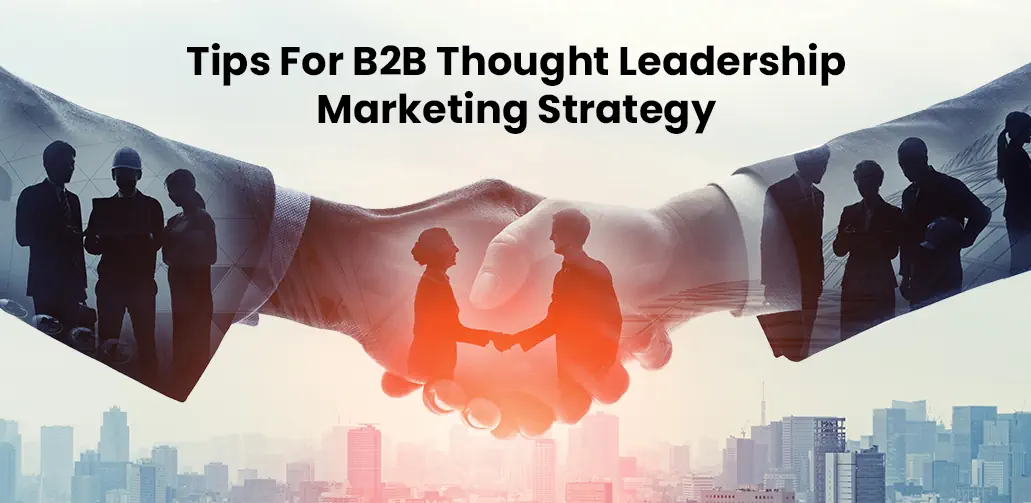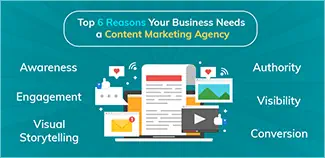BLOG
Essential tips for B2B Thought Leadership
marketing strategy
The concept of thought leadership isn't new. In fact, it traces back to 1994, when Joel Kurtzman (American economist and editor of Strategy + Business) first coined the term. He wrote: "Thought Leaders are those people who possess a distinctively original idea, a unique point of view or an unprecedented insight into their industry." Since then, he has forever changed the world of management writing by coining the word "thought leader".
Who are Thought Leaders?
The thought leader is at the intersection between the subject matter expert, the social influencer and the key opinion leader.
The best thought leaders are defined as experts in their field. Those experts could be CEOs, consultants, authors, coaches or businesses (B2C and B2B).
Thought leaders are usually those with:
- Strong opinions
- Experience
- Knowledge
- Transparency
- A desire to share their wisdom with others
- The ability to think outside the box.
In recent years, Edelman and LinkedIn have been monitoring the landscape of thought leadership. Their research in 2020 revealed that 89% of decision-makers acknowledge the effectiveness of thought leadership in shaping their perceptions of an organisation. However, only 17% of them consider the quality of the majority of thought leadership they encounter to be very good or excellent.
But why should companies consider a thought leadership strategy? In today’s B2B marketing landscape, the significance of thought leadership cannot be overstated. It’s crucial because customers prioritise conducting business with individuals and brands they trust, and trust is cultivated, in part, through credibility and expertise..
Why create thought leadership content?
Thought leadership is all about you creating value, building knowledge and taking a stand. Creating thought leadership content offers numerous benefits for businesses. Here are some key advantages of thought leadership content:
- Increased brand awareness
- Enhanced credibility and trust
- Customer loyalty and retention
- Lead generation and sales
- Competitive advantage
- Industry influence and partnerships
There is no one-size-fits-all approach to implementing a thought leadership marketing plan. But if you’re trying to build or refine your B2B thought leadership marketing strategy, you’ll want to account for each of these considerations.
Define your thought leadership objectives
Before diving into execution, it's crucial to define what you want to accomplish with your thought leadership initiatives. For instance, whether your goal is to boost brand awareness, generate leads or solidify expertise within a particular niche, it's essential to align these objectives with your overarching business goals to maintain consistency and relevance.
Understand your target audience
Effective thought leadership begins with understanding your target audience's pain points, challenges and aspirations. Conduct thorough research to gain insights into their needs, preferences and interests. In B2B marketing, producing content that provides solutions tailored to your audience is a powerful strategy for enhancing thought leadership. The aim is to captivate your audience, offer valuable resources that address their needs and potentially attract new clients to your brand.
Develop high-quality content
Content that adeptly conveys your expertise must offer tangible value to the consumer, viewer or reader. It's imperative for every business to generate meaningful content that effectively demonstrates their expertise, positioning them as the preferred choice for their audience.
Create a diverse range of high-quality content formats, including articles, whitepapers, case studies, videos, newsletters, survey reports and podcasts. Focus on delivering actionable insights, industry trends and thought-provoking perspectives that demonstrate your expertise and provide tangible value to your audience.
Leverage data and insights
Back your thought leadership initiatives with data-driven insights and research. Conduct surveys, analyse industry trends and leverage proprietary data to uncover unique perspectives and insights. Incorporate these findings into your content to bolster credibility and authority within your industry.
Cultivate thought leaders within the organisation
Identify key subject matter experts within your organisation and empower them to become thought leaders in their respective domains. Encourage them to share their expertise through various channels, including blogs, social media, speaking engagements and industry events. Collaborate with industry influencers or subject matter experts to contribute their expertise through interviews, guest blog posts or quotes. This will enhance the credibility and depth of your content.
Establish a strong online presence
Maintain a robust online presence to amplify your thought leadership efforts. Optimise your website and social media profiles to showcase your expertise and engage with your audience. Consistently share snippets, teasers or key takeaways from your thought leadership content on platforms where your target audience is active.
Distribute and promote your content
Strategies and techniques revolving around the dissemination and promotion of your thought leadership content are integral components of a thought leadership campaign. Depending on your business, you can promote content through various avenues. Reach out to relevant opinion leaders and influencers for contributions to your thought leadership content.
Monitor and measure performance
Regularly monitor the performance of your thought leadership marketing efforts and track key metrics such as website traffic, engagement levels, lead generation and brand sentiment. Like any B2B strategy, it's crucial to periodically assess its performance. Are your objectives being achieved? If not, pinpoint the issues and take corrective action. Continuously seek areas for enhancement and heed feedback from your audience to refine your approach.
Stay agile and adaptive
The business landscape is constantly evolving, requiring thought leaders to stay agile and adaptive in their approach. Trends and emerging news can change quickly, so always be prepared to react accordingly. Keep abreast of industry trends, technological advancements and emerging opportunities to stay ahead of the curve. Continuously refine your thought leadership strategy to remain relevant and impactful in a dynamic market environment.
If developing your thought leadership strategy is of interest to you, then contact us to discuss your needs for 2024. Please visit www.ticworks.com, contact + 91 842 581 4016 / 17 or simply drop an email at solutions@ticworks.com.




